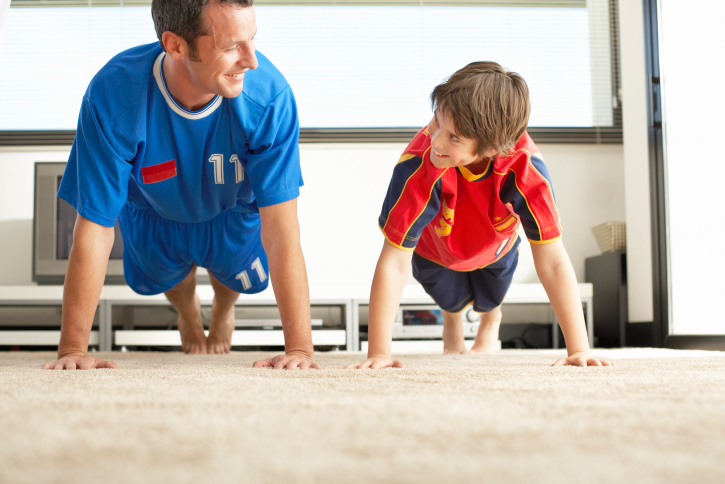Upper body strength training at a young age can help prevent drowning, improve swimming and prepare children for life and sport.
Step back and watch Molly Fostek play on the ground with her two young children. It’s easy to see the fun, the game of it all.
Everyone lies flat on their bellies and hides their eyes. Then BOO! Everyone pops up their head and pushes their upper body off the floor. They laugh, get back down and repeat.
Epic round of peek-a-boo? Indeed.
“And it’s proof I’m neurotic,” Fostek says readily. “But the kids have no idea. To them, we’re just playing a game.”
That’s just fine by Fostek.
They don’t need to know that years ago Fostek’s cousin, a paramedic, warned her that many kids drown in just inches of water because they didn’t have the upper body strength to push themselves up.
Or that what they are really doing in the game is a series of push-ups to build up that upper body strength.
Or that because they live on the water, Fostek directly correlates being a stronger swimmer with having good upper body strength, even at a young age.
In fact, children ages 1 to 4 have the highest drowning rates, according the Centers for Disease Control and Prevention (CDC). In 2009, of the children ages 1 to 4 who died from unintentional injury, more than 30 percent died from drowning, the CDC reports.
That doesn’t even take into account the children who visit the emergency room for non-fatal injuries. Some statistics claim that for every child who drowns, another four were injured from their time being submerged.
Most parents know and understand the risk of children and water.
It’s in how Fostek prepares her children to be around water that sets her apart.
Yes, parents should teach their children to swim, put barriers up around pools, and never let a child be around water unsupervised.
But they should also invest time in strength training.
“I grew up on the water, I live on the water,” Fostek says of the Tidewater Virginia region where watersports and boating is a yearlong activity. “I understand how and why developmentally it’s important and how it can save their life.”
Fostek has a unique perspective. Not only is she a mother of two, but she’s also a physical therapist and currently serving as the clinical director of the Tidewater Physical Therapy location in the Great Bridge region of Chesapeake, Virginia.
“When I was in high school, my gym teacher once told me that everyone should be able to do one pull up,” Fostek says. “If we ever fell out of a helicopter, we should be able to pull ourselves back in it.”
She doesn’t envision her children falling out of helicopters anytime soon. But she does think the lesson of preparing your body, and building up strength to keep you safe, is an important one to instill at a young age
“That doesn’t mean you have to be a drill sergeant and say ‘do 20 squats and 10 push ups’ to your kids every day,” Fostek says. “It just means we should do more physical play with them.”
Get down on the ground and play peek-a-boo. Take them to playground and encourage the monkey bars and rock climbing walls. Get out side and run around.
And if that play is fun and helps work on upper body strength at the same time? That’s the bonus.
If they need to push themselves out of water, swim to shore or climb back into a helicopter, they’ll be prepared.


